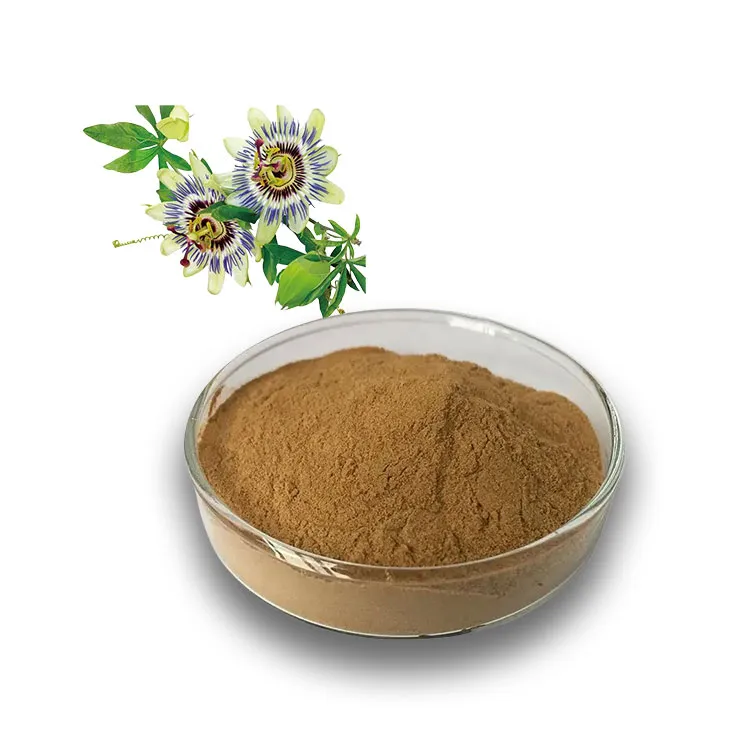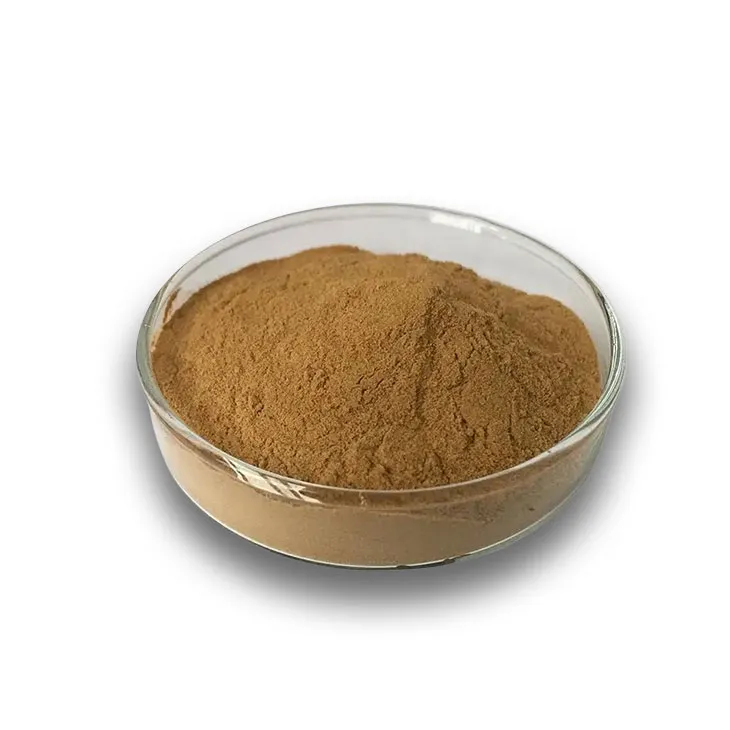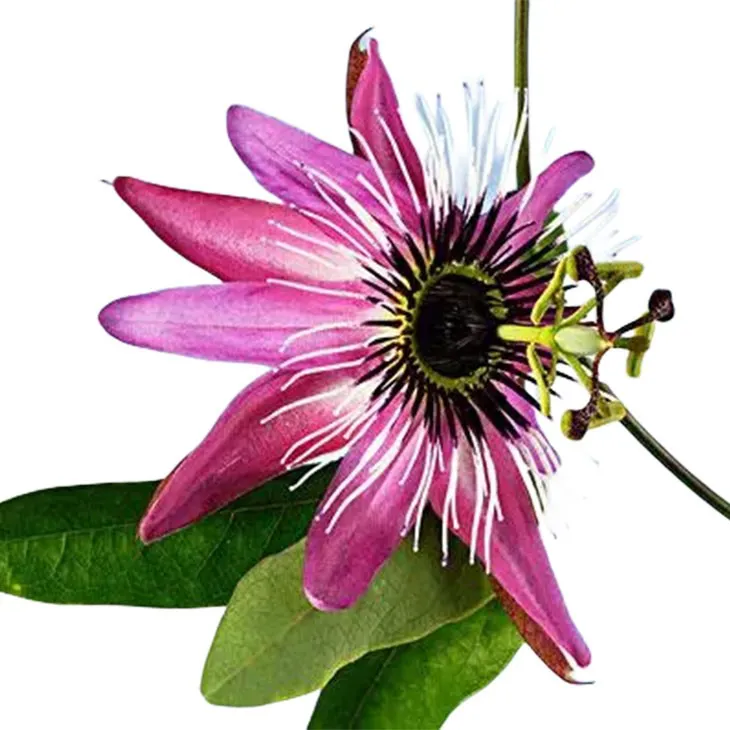- 0086-571-85302990
- sales@greenskybio.com
How to Extract Passionflower Extract from Plants?
2024-11-28

1. Introduction
Passionflower, with its numerous potential benefits, has become an important plant source for various industries. The extraction of Passionflower Extract is a complex yet fascinating process. This article will delve into the detailed methods of obtaining Passionflower Extract from plants, including the selection of plant sources, extraction techniques, and post - extraction processing.

2. Selection of Passionflower Plants
2.1 Quality Criteria
The first step in extracting Passionflower Extract is to select the appropriate passionflower plants. Healthy plants are crucial for a high - quality extract. The plants should be free from diseases, pests, and significant physical damage. For example, the leaves should be vibrant green, without any signs of yellowing or wilting. The stems should be firm and intact.
2.2 SourcingThere are different sources of passionflower plants. They can be sourced from cultivated farms or in some cases, from the wild (although wild harvesting needs to be done sustainably). Cultivated plants often have more consistent quality as they are grown under controlled conditions. Farms may use organic or conventional farming methods, and the choice can affect the final extract's properties.

3. Traditional Extraction Methods
3.1 Maceration
3.1.1 Principle
Maceration is one of the traditional and widely - used methods for extracting passionflower extract. The principle behind maceration is to soak the plant parts (such as leaves, flowers, or stems) in a solvent. This allows the active compounds in the plant to dissolve into the solvent over time.
3.1.2 Solvent SelectionThe choice of solvent is important in maceration. Water - alcohol mixtures are commonly used. Ethanol - water mixtures, for example, are effective because ethanol can dissolve a wide range of organic compounds present in the passionflower, while water helps in dissolving some of the polar components. The ratio of water to alcohol can be adjusted depending on the specific compounds to be extracted.
3.1.3 Process DurationThe maceration process usually takes a relatively long time, often days or weeks. During this period, the plant material is left in the solvent, and the solvent is occasionally stirred to enhance the extraction efficiency. After the maceration period, the resulting liquid contains the dissolved active compounds from the passionflower along with the solvent.
3.2 Infusion3.2.1 How it Works
Infusion is another traditional method that is somewhat similar to maceration. In infusion, the passionflower plant parts are steeped in a hot solvent, usually water. The heat helps to accelerate the extraction process compared to maceration. However, the use of hot water may limit the extraction of some heat - sensitive compounds.
3.2.2 ApplicationInfusion is often used in the preparation of herbal teas or some traditional remedies. The resulting infusion can be consumed directly or further processed for the isolation of specific compounds.

4. Modern Extraction Methods
4.1 Supercritical Fluid Extraction
4.1.1 Basics of Supercritical Fluids
Supercritical fluid extraction (SFE) is a modern and innovative method for extracting passionflower extract. Supercritical fluids are substances that are at a state above their critical temperature and critical pressure. For example, carbon dioxide can be used as a supercritical fluid. At its supercritical state, carbon dioxide has properties between those of a gas and a liquid. It has a high diffusivity like a gas, which allows it to penetrate the plant material easily, and a density similar to that of a liquid, enabling it to dissolve a wide range of compounds.
4.1.2 Advantages
- Environmentally Friendly: One of the major advantages of using supercritical carbon dioxide is its environmental friendliness. Carbon dioxide is a non - toxic, non - flammable gas that is abundant in nature. After the extraction process, it can be easily removed from the extract by simply reducing the pressure, and it can be recycled for further use.
- Selective Extraction: SFE can be adjusted to selectively extract specific compounds from the passionflower. By changing the temperature, pressure, and addition of modifiers (such as small amounts of ethanol), different compounds can be preferentially extracted.
- High - Quality Extract: The extracts obtained by SFE are often of high quality as the extraction conditions can be precisely controlled. This helps to preserve the integrity of the active compounds in the passionflower.
The passionflower plant material is placed in a high - pressure vessel. Supercritical carbon dioxide is then pumped into the vessel. The pressure and temperature are maintained at the appropriate levels for the extraction to occur. After the extraction, the pressure is reduced, and the carbon dioxide returns to its gaseous state, leaving behind the concentrated passionflower extract.
4.2 Microwave - Assisted Extraction4.2.1 Working Mechanism
Microwave - assisted extraction (MAE) utilizes microwave energy to enhance the extraction process. Microwaves can heat the plant material and the solvent simultaneously and unevenly. This causes internal pressure differences within the plant cells, which leads to the rupture of cell walls and the release of intracellular compounds into the solvent more efficiently.
4.2.2 Benefits
- Reduced Extraction Time: Compared to traditional methods like maceration, MAE can significantly reduce the extraction time. This is because the microwave energy accelerates the mass transfer of compounds from the plant to the solvent.
- Energy Efficiency: Microwave - assisted extraction is relatively energy - efficient as it heats the sample directly rather than heating the entire surrounding environment.
However, there are some considerations in using MAE. The power and exposure time of the microwaves need to be carefully controlled to avoid over - heating and degradation of the active compounds in the passionflower.

5. Post - Extraction Processing
5.1 Concentration
5.1.1 Evaporation
After the extraction process, whether it is by traditional or modern methods, the resulting extract usually needs to be concentrated. Evaporation is a common method for concentration. In evaporation, the solvent is removed by heating the extract under controlled conditions. However, care must be taken to avoid over - heating as some of the active compounds may be heat - sensitive. For example, if water - alcohol mixtures are used as solvents, the alcohol may be evaporated first at a lower temperature, and then the remaining water can be removed at a slightly higher temperature.
5.1.2 Other Concentration TechniquesThere are also other concentration techniques such as membrane filtration and reverse osmosis. Membrane filtration can separate the solvent from the active compounds based on the size of the molecules. Reverse osmosis uses a semi - permeable membrane and pressure to remove the solvent, leaving behind a more concentrated extract.
5.2 Purification5.2.1 Chromatography
Purification of the passionflower extract may be necessary to obtain a pure and consistent product. Chromatography is a powerful technique for purification. For example, high - performance liquid chromatography (HPLC) can be used to separate different compounds in the extract based on their chemical properties such as polarity and molecular size. This allows for the isolation of specific active compounds or the removal of impurities.
5.2.2 CrystallizationCrystallization can also be used for purification. Some compounds in the passionflower extract may form crystals under certain conditions. By carefully controlling the temperature, concentration, and other factors, pure crystals of specific compounds can be obtained, which can be further processed or used directly.
6. Applications of Passionflower Extract
6.1 Pharmaceuticals
Passionflower extract has been used in the pharmaceutical industry. It is believed to have anxiolytic (anti - anxiety) and sedative properties. Some studies suggest that certain compounds in the extract can interact with neurotransmitter systems in the brain to produce these effects. Therefore, it can be used in the development of medications for anxiety disorders or to help with sleep problems.
6.2 Food AdditivesAs a food additive, passionflower extract can be used for its flavor and potential health - promoting properties. It can add a unique flavor to food and beverages. Moreover, due to its antioxidant properties, it may also help in preserving the quality of food products.
6.3 CosmeticsIn the cosmetics industry, passionflower extract is used for its skin - beneficial properties. It is believed to have anti - inflammatory and moisturizing effects. It can be incorporated into creams, lotions, and other skincare products to improve skin health and appearance.
7. Conclusion
The extraction of passionflower extract from plants involves multiple steps and techniques. From the selection of healthy plants to the application of traditional and modern extraction methods, and finally to post - extraction processing, each step is crucial in obtaining a high - quality extract. With the increasing demand for natural products in various industries such as pharmaceuticals, food, and cosmetics, the proper extraction and utilization of passionflower extract will continue to be an important area of research and development.
FAQ:
What are the main sources for passionflower extract?
The main source is the passionflower plant. It is important to select healthy passionflower plants as the starting material for extraction.
What is maceration in the context of passionflower extract extraction?
Maceration is a traditional extraction method. In this process, parts of the passionflower plant are soaked in a solvent (such as water - alcohol mixtures) for a long time, which could be days or weeks.
Why is supercritical fluid extraction considered more environmentally friendly for passionflower extract?
Supercritical fluid extraction, often using substances like carbon dioxide in a supercritical state, is considered more environmentally friendly because it generally uses less harmful chemicals compared to some traditional extraction methods and may produce less waste.
How can the passionflower extract be concentrated after extraction?
The passionflower extract can be concentrated through methods like evaporation or other concentration techniques. These help to reduce the volume of the extract and increase the concentration of the active components.
What are the applications of passionflower extract?
Passionflower extract can be used in pharmaceuticals, for example, it may have properties that are beneficial for certain medical conditions. It is also used as a food additive and in cosmetics due to its various beneficial properties.
Related literature
- The Extraction and Analysis of Bioactive Compounds from Passionflower"
- "Optimization of Passionflower Extract Production: A Review"
- "Passionflower Extract: Properties, Extraction Methods and Industrial Applications"
- ▶ Hesperidin
- ▶ Citrus Bioflavonoids
- ▶ Plant Extract
- ▶ lycopene
- ▶ Diosmin
- ▶ Grape seed extract
- ▶ Sea buckthorn Juice Powder
- ▶ Fruit Juice Powder
- ▶ Hops Extract
- ▶ Artichoke Extract
- ▶ Mushroom extract
- ▶ Astaxanthin
- ▶ Green Tea Extract
- ▶ Curcumin
- ▶ Horse Chestnut Extract
- ▶ Other Product
- ▶ Boswellia Serrata Extract
- ▶ Resveratrol
- ▶ Marigold Extract
- ▶ Grape Leaf Extract
- ▶ New Product
- ▶ Aminolevulinic acid
- ▶ Cranberry Extract
- ▶ Red Yeast Rice
- ▶ Red Wine Extract
-
Coconut Water Powder
2024-11-28
-
Peppermint Extract Powder
2024-11-28
-
Alfalfa Meal
2024-11-28
-
Plantain extract
2024-11-28
-
Moringa powder
2024-11-28
-
Sea buckthorn oil
2024-11-28
-
Rosemary extract
2024-11-28
-
Mulberry Extract
2024-11-28
-
Elderberry Extract
2024-11-28
-
Ivy Extract
2024-11-28





















